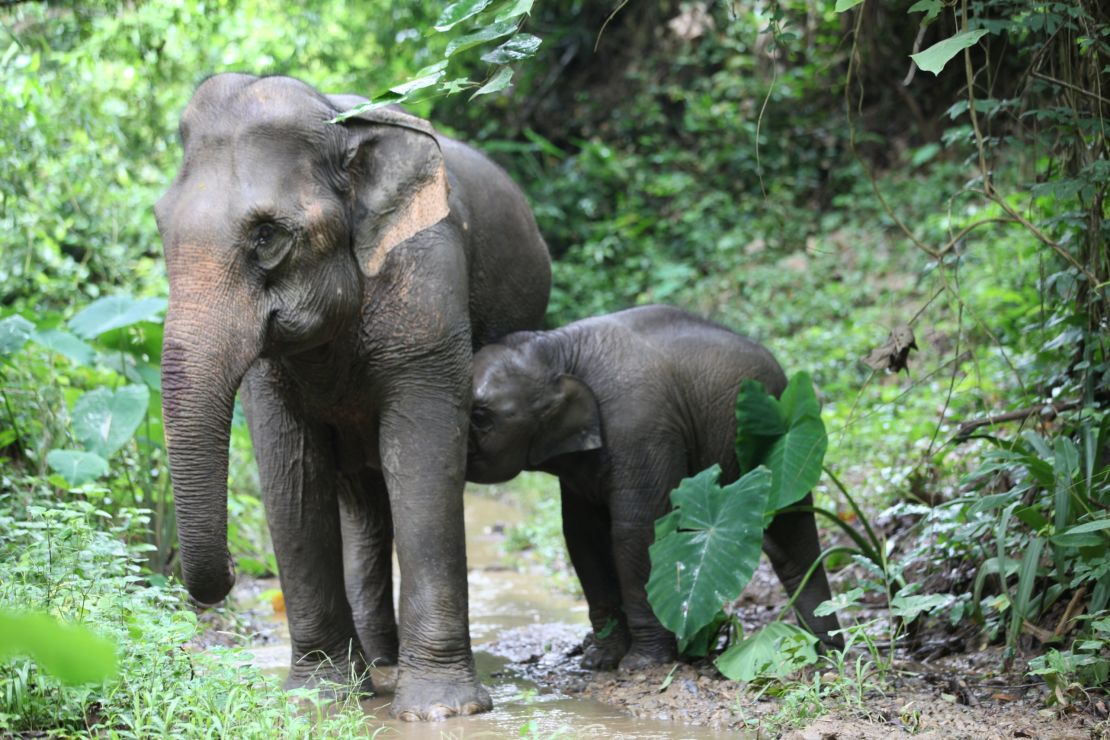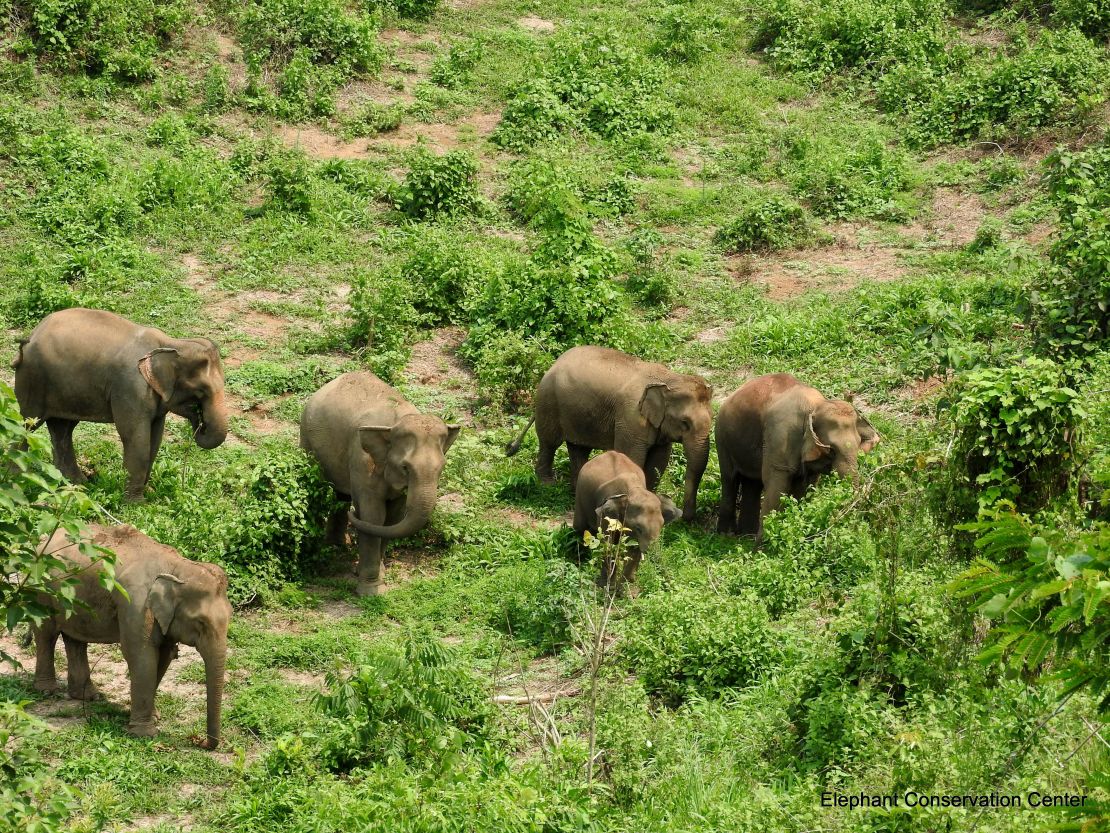Story highlights
In Laos, MandaLao elephant camp hopes to provide a responsible alternative to exploitative practices.
Nearly 75% of elephants in Southeast Asia are exploited, according to a World Animal Protection report.
Laos elephant numbers are also dwindling, with only 800 left.
A trip to MandaLao elephant camp is a different experience to visiting a typical elephant camp in Laos or Thailand.
There are no elephant rides. No circus tricks. No evening elephant dances.
Instead, the humans simply observe as these huge mammals splash in the river, wrestle in the grass, and snack on the forest canopy.
It’s a stark contrast to the rest of Southeast Asia, where 75% of 3,000 elephants surveyed in tourist venues between late 2014 and mid-2016 were living in unacceptable conditions, according to a World Animal Protection report.
“One of the most frequent questions we get from travelers is about ‘sanctuaries’ in Asia,” Jason Baker, PETA vice president of international campaigns, tells CNN.
“I often tell people that the best elephant sanctuaries are pretty boring for humans because they really just want elephants to walk around and be elephants.”
A common problem
In the “Land of a Million Elephants,” as Laos is known,there are only 800 trunk-swinging creatures left – just half of them are in the wild.
An elephant's life
In the 1980s, there were an estimated 4,000 elephants in Laos, meaning the population has plummeted by more than 75% in the past 30 years.
Deforestation, poachers seeking ivory, the illegal export of elephants to foreign countries for circus shows, and low birth rates,due to the animals being tasked with stressful jobs such as logging and performing for tourists, have all contributed to the falling population.
Recently, wildlife investigator and filmmaker Karl Ammann claimed that dozens of elephants from Laos are being illegally sold for around $300,000 to China to be displayed in zoos and safari parks.
“Elephants mean so much to the people of Laos, but with the low numbers, some kids here never even see an elephant,” Michael Vogler, who in 2016 co-founded MandaLao, tells CNN.
“A lot of people don’t realize how desperate and dire the situation is.”
Sanctuaries not what they seem
Asia's exploited elephants
In Laos, there are roughly 15 elephant sanctuaries, which are often billed asconscientious camps and resorts, where tourists can interact with retired elephants in a responsible way.
But sanctuary can be a misleading word, due to widespread “greenwashing.” While such camps routinely claim to care for retired elephants, well-intentioned tourists often arrive to discover the animals are kept in chains, made to give rides and perform circus tricks, and controlled by hooks.
That’s exactly what happened to Vogler.
“On my first trip to Laos (in 2011), I went to one of the elephant sanctuaries here in Luang Prabang and it was not at all what you would expect – the animals were on super short, 1-meter-long chains all day in the hot sun (when they were not being ridden by tourists),” says Vogler.
“They were swaying back and forth neurotically, and looked really unhappy.”
He was inspired to make a change.
A new stomping ground
Located on the banks of the Nam Khan River, in the north of the country, MandaLao camp occupies 80 hectares of land, including shady spaces, forests, creeks and a veterinary facility on-site.
“The industry has really been focused on training elephants to entertain humans. Our goal is to flip that around,” Vogler says. “We invite guests to come in and observe.”
Visitors to MandaLao can expect forest walks with the elephants, with food treats used to motivate the animals along the route.
Rides are off the menu. They typically require traumatizing training, Vogler says, and the weight of the rider canharmthe animal’s back.
“In the morning, the elephants normally bathe in the creek, so we wait there with guests to observe them,” says Vogler.
“We bring big baskets of bananas and sugarcane, which usually get their attention because elephants are always thinking about food.”
Meet the elephants

Currently, the camp is home to six adult female elephants and an18-month-old baby. They were all rescued from the logging industry.
“They have such individual personalities and traits. With Kit (the baby), sometimes we have to try two or three different things to see what he wants to eat that day,” says Vogler.
“He won’t eat sugar cane unless you peel it for him. He’s quite spoiled!”
While the animals independently forage about 50% of their own food in the forest, MandaLao supplements their diets with a mix of napier grass, banana trees, corn and sugar cane.
If all goes as planned, Vogler says that Kit won’t spend his whole life at MandaLao.
The team is working with a national park to reintroduce elephants into the wild.
In good company

MandaLao isn’t the only elephant center in Laos that’s working to change the norm.
In 2011, the 106-hectare Elephant Conservation Center (ECC) was set up in western Laos as the country’s first elephant veterinary facility, taking care of animals that have been injured in logging accidents or affected by disease.
“The over-exploitation (in industries like logging) of elephants has led to an increase in accidents, wounds, sometimes deaths and the reduction of their lifespan,” explains Sébastien Duffillot, the ECC’s founder.
“Because they are overworked, and because working in logging has become the only way their mahouts(elephant keepers)could generate an income, they are no longer being given the chance to reproduce.”
Elephants make once-in-a-lifetime move to new home
Pregnancy and nursing takes up to three years, meaning females would need a long-term break from work.
“This is not an option for mahouts who can’t afford going that long without revenues,” says Duffillot.
The solution? A program that pays mahouts a four-year salary in exchange for letting their female cows reproduce at the ECC, where ante- and post-natal care is provided.
Looking ahead
Duffillot says the problems facing elephants in Laos – and across Southeast Asia – are not going away soon, and a master plan is needed.
According to the World Wide Fund For Nature, the population of Asian elephants has decreased by 50% over the past century, from 100,000 in the early 1900s to just 50,000 today.
The situation is most dire in places such as Bangladesh and Vietnam – where an estimated 200wild elephants existin each country. Meanwhile, there are less than 1,000 elephants left in both Cambodia and Laos.
“My philosophy is, and has always been, bottom to top, and not the other way round. But it takes time. And elephants are vanishing fast,” he says.
“I believe in people committing themselves locally, expanding from a village to a district, and thenon to a province … their success will raise interest at central level to build a national (and hopefully regional) programs that make sense.”










































